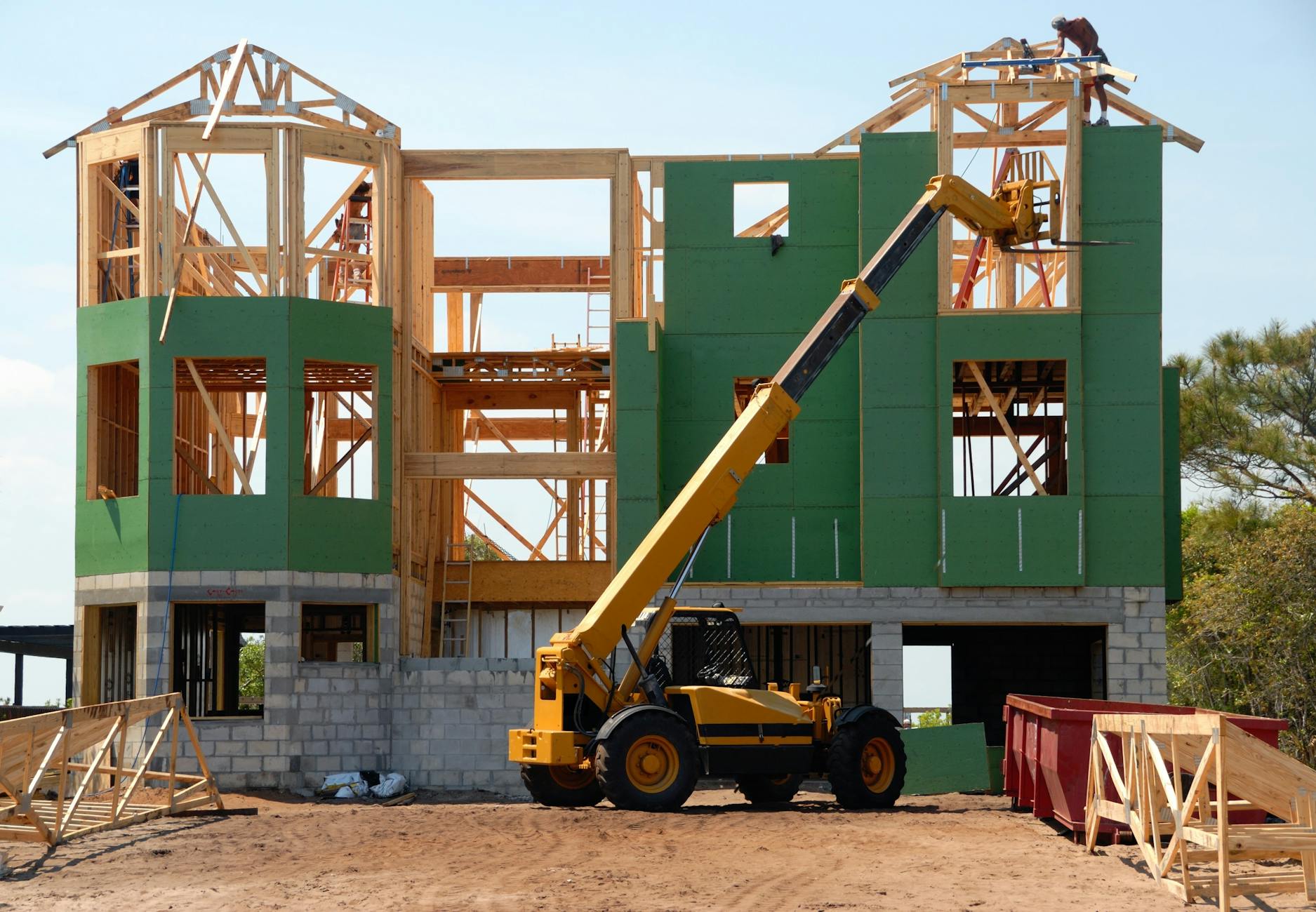Bursting with potential and promise, real estate development is more than just erecting buildings—it’s about creating spaces that inspire, motivate and transform communities. It’s a delicate balance of art and science, where every decision impacts the final outcome. This blog post will dive into the heart of real estate development, unraveling its complexities and showcasing its stunning potential.
Whether you’re a seasoned developer or just getting a feel for the industry, understanding the art and science behind real estate development is key. From site selection to construction, every step is crucial in crafting the perfect project. So, let’s delve into this fascinating world and discover what it takes to build dreams from the ground up.
Building Dreams: Exploring the Art and Science of Real Estate Development
The Essence of Real Estate Development
Real estate development is an intricate blend of art and science, where vision meets practicality. It involves the creation, improvement, and transformation of land or buildings to fulfill a specific purpose, whether it be residential, commercial, or mixed-use. This dynamic field requires a diverse set of skills, ranging from market analysis and financial management to design and construction expertise. In this section, we will delve deeper into the definition and scope of real estate development, as well as the pivotal role played by real estate developers.
Definition and Scope of Real Estate Development
Real estate development encompasses a wide range of activities that aim to maximize the value and potential of a property. It involves acquiring land or existing buildings, conducting feasibility studies, formulating development plans, securing financing, overseeing construction, and ultimately bringing the project to fruition. The scope of real estate development is vast, spanning from small-scale residential projects to large-scale commercial developments that shape skylines.
 Person Pointing on a Project Plan in Blueprint (Photo by RDNE Stock project)
Person Pointing on a Project Plan in Blueprint (Photo by RDNE Stock project)
The Role of Real Estate Developers
Real estate developers are the driving force behind the realization of a development project. They possess a unique blend of entrepreneurial spirit, market insight, and project management skills. Developers identify opportunities, assess market demand, and devise strategies to meet the needs of the target audience. They assemble a team of professionals, including architects, engineers, and contractors, to translate their vision into reality.
Developers play a crucial role in navigating the complex world of real estate. They conduct thorough market research to identify trends, analyze the financial viability of a project, and secure funding sources. They liaise with local authorities to obtain necessary approvals and permits, ensuring compliance with zoning regulations and building codes. Throughout the development process, developers oversee construction activities, manage budgets, and mitigate potential risks.
In essence, real estate developers are the visionary orchestrators who bring together various stakeholders, including investors, contractors, and future occupants, to create vibrant and sustainable communities.
Stay Tuned for More Insights!
In the following sections, we will explore the key stages of real estate development, discuss the challenges faced by developers, and highlight the strategies they employ to overcome obstacles. Whether you are an aspiring developer, an investor, or simply intrigued by the world of real estate, this series will provide you with valuable insights into the art and science of building dreams.
The Art of Real Estate Development
Real estate development is a fascinating blend of art and science. It requires a creative vision, meticulous planning, and a deep understanding of the market. In this section, we will explore the artistic side of real estate development, focusing on vision and concept development, market research and analysis, and site selection and acquisition.
Vision and Concept Development
Every successful real estate development project starts with a compelling vision. It is the driving force behind the project, the grand idea that captures the imagination and inspires action. Vision and concept development involve brainstorming, ideation, and the creation of a unique identity for the development.
A key aspect of vision and concept development is understanding the needs and desires of the target market. What are the trends and preferences that will shape the development? What kind of lifestyle or experience are potential buyers or tenants seeking? By answering these questions, developers can create a concept that resonates with the target audience.
 Free stock photo of aerial, architecture, church (Photo by Joy Xu)
Free stock photo of aerial, architecture, church (Photo by Joy Xu)
Market Research and Analysis
Market research and analysis are essential for a successful real estate development project. This involves collecting and analyzing data about the local market, including demographics, economic trends, and supply and demand dynamics. By understanding the market, developers can identify opportunities and make informed decisions.
Market research helps developers answer critical questions. Is there a demand for the proposed development? What are the current and projected market conditions? Who are the competitors? Through careful analysis, developers can gain insights into the market’s potential and assess the feasibility of their project.
Site Selection and Acquisition
Once the vision and concept are established, the next step is finding the ideal location for the development. Site selection is a strategic process that involves evaluating various factors such as accessibility, infrastructure, zoning regulations, and proximity to amenities.
Developers must consider the compatibility of their concept with the chosen site. Does it align with the surrounding neighborhood and community? Will it enhance the local area or disrupt the existing fabric? These are crucial considerations that can make or break a project.
 Yellow and Black Heavy Equipment Near Unfinished Building (Photo by Pixabay)
Yellow and Black Heavy Equipment Near Unfinished Building (Photo by Pixabay)
Acquiring the chosen site involves negotiating with property owners, conducting due diligence, and securing the necessary permits and approvals. It requires careful navigation of legal and financial complexities. A successful acquisition sets the stage for the actual construction and realization of the development’s vision.
In conclusion, the art of real estate development lies in the ability to envision a project that meets the needs and desires of the target market. It requires a deep understanding of the market, meticulous research and analysis, and strategic site selection and acquisition. These elements lay the foundation for a successful development that not only fulfills its purpose but also adds value to the community it serves.
The Science of Real Estate Development
Real estate development is an intricate process that combines art and science to create dream spaces. While the artistry of design and aesthetics play a significant role, it is the science behind real estate development that ensures its success. In this section, we will explore the various scientific aspects of real estate development, including financial feasibility analysis, project financing and funding sources, construction and project management, and marketing and sales strategy.
Financial Feasibility Analysis
Before any real estate development project can take off, a meticulous financial feasibility analysis is conducted. This analysis assesses the project’s potential profitability and examines its viability from a financial perspective. It takes into account factors such as construction costs, market demand, projected rental or sale prices, and operating expenses. By meticulously crunching numbers and evaluating various scenarios, developers can determine whether a project is financially feasible or not.
 Persons Holding Printer Papers with Graphs (Photo by Artem Podrez)
Persons Holding Printer Papers with Graphs (Photo by Artem Podrez)
Project Financing and Funding Sources
Once a project’s financial feasibility is established, the next step is securing project financing. Real estate development projects require substantial capital, and developers often rely on a mix of funding sources. These sources can include traditional bank loans, private equity investment, crowdfunding, or even government grants. Each funding source comes with its own set of pros and cons, and developers must carefully evaluate their options to secure the most favorable terms and conditions.
Construction and Project Management
With the financial aspects in place, the actual construction and project management phase begins. This is where the science of real estate development truly comes to life. Skilled project managers oversee every aspect of the construction process, coordinating with architects, engineers, contractors, and laborers. They ensure that the project stays on track, adheres to timelines and budgets, and meets quality standards. Effective project management is crucial for the successful completion of a real estate development project.
Marketing and Sales Strategy
Once the project nears completion, it is essential to have a well-thought-out marketing and sales strategy in place. Real estate developers need to reach their target audience effectively and showcase the unique features and benefits of their development. This involves market research, identifying the target demographic, creating compelling marketing materials, and utilizing various channels such as social media, online listings, and traditional advertising. A strong marketing and sales strategy can make all the difference in attracting potential buyers or investors and ensuring a successful project launch.
In conclusion, the science of real estate development encompasses financial feasibility analysis, project financing and funding sources, construction and project management, and marketing and sales strategy. These scientific aspects are crucial for developers to ensure the success of their projects. By carefully analyzing the financial viability, securing appropriate funding, managing the construction process efficiently, and implementing effective marketing strategies, real estate developers can turn their dreams into reality. Stay tuned for the next section where we delve into the art of real estate development and explore the creative aspects that make it truly captivating.
Conclusion
In conclusion, real estate development is a captivating blend of art and science. It requires a keen understanding of market trends, financial analysis, and architectural vision. Successful developers possess the ability to transform empty plots of land into thriving communities, where dreams are built and memories are made. By carefully balancing creativity and practicality, they create spaces that enhance the quality of life for individuals and communities alike. Whether it’s designing sustainable buildings, revitalizing urban areas, or crafting luxurious residential complexes, real estate development has the power to shape our surroundings and leave a lasting impact. So next time you walk through a beautifully designed neighborhood or step foot inside a modern skyscraper, remember the artists and scientists behind it, who dared to dream big and turned their visions into reality.